European Researchers' Night 2022 / Vísindavaka 2022
After two years of COVID break, Vísindavaka, the Icelandic European Researchers' Night 2022 took place on 1 Oct 2022 and it was a real success: while we had 5700 visitors in 2019, we had significantly more this year: the official number is 6400 visitors, but my feeling is that this number was even higher.

The Computer Science department had a booth showcasing some of its research.
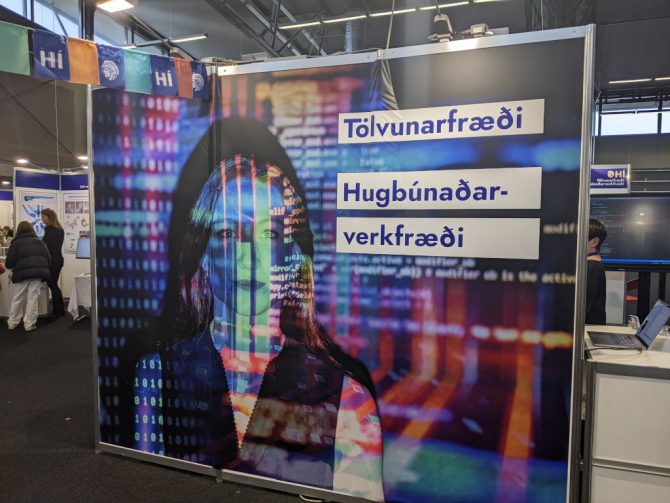
Silence before the storm:
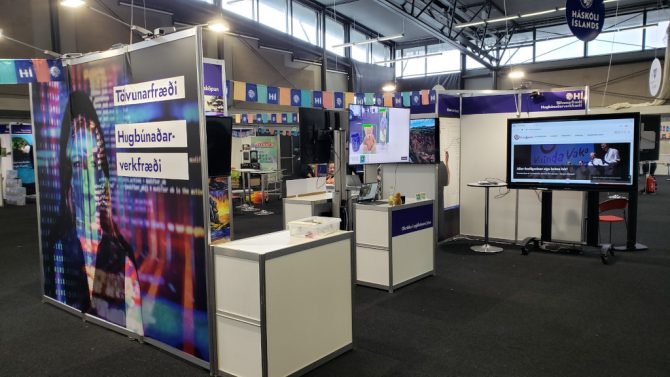
While we still need to work on the gender diversity of the team, we had at least a diverse range of exhibits (and nationalities): from creating art using neural networks over to an industrial 3D scanner, remote sensing where satellite images are analysed, to software engineering with sketches on a touch screen, cybersecurity and our Center of Excellence RAISE.

Cybersecurity
October is the European Cybersecurity Month and we had a flyer for kids (Hvernig á að vera öruggur á netinu) and a quiz for more grown ups in order to raise awareness for cybersecurity.
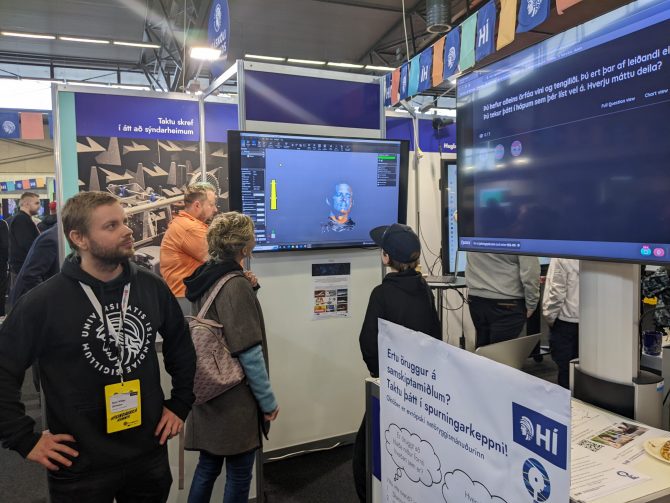
CoE RAISE
CoE RAISE (Research on AI- and Simulation-Based Engineering at Exascale) gave a glimpse into neural networks by using a neural network that runs purely in your browser without any connection to a super computer. Simply use the camera of your smartphone (or laptop) to detect objects in real-time Just open the following web page and allow your browser to use the camera: https://nvndr.csb.app/.
(Allow a some seconds up to a minute for loading the trained model and initialisation.)
The used approach is Single Shot Detector (SSD) (the percentage shows how sure the neural network is about the classification) using the Mobilenet neural network architecture. The dataset used for training is COCO (Common Objects in Context), i.e. only objects of the labeled object classes contained in COCO will get detected. The Javascript code that is running in your browser uses Tensorflow Lite and its Object Detection API and model zoo.
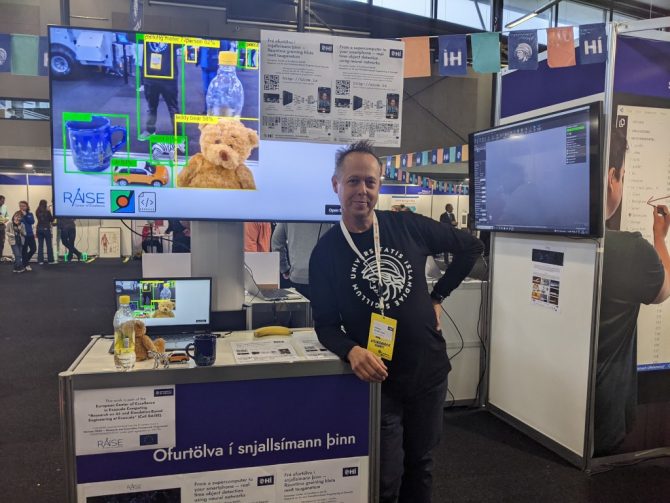
Fun fact: a toy car in the foreground and person in the background next to it is classified as a skateboard -- I guess the neural network learned that a thing with two wheels and a something classified as person on top is a skateboard (this limitation of a neural network is a good example to discuss risks and chances of AI):
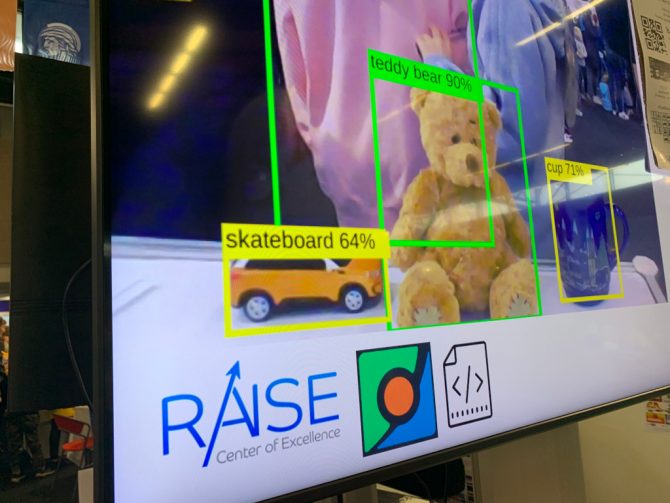
In addition, the work from the Sound of Vision is given an AI twist in CoE RAISE, so we had also a 3D scanner that scans the shape of your ear in order to calculate how the shape of your ear influences how you hear from different directions.
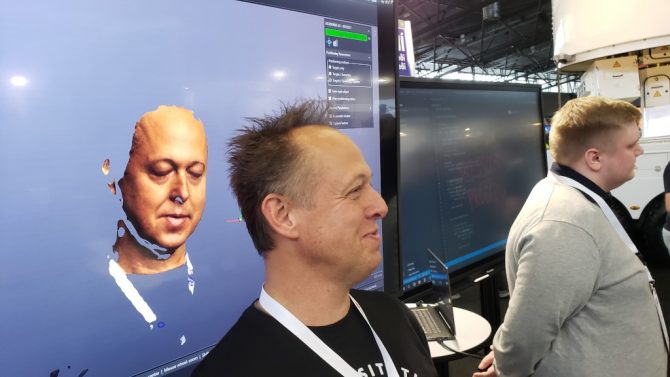
Finally, the remote sensing demonstration relates also to work done in CoE RAISE where neural networks are used to classify land cover from satellite images. Visitors could compete against a neural network to classify land cover.
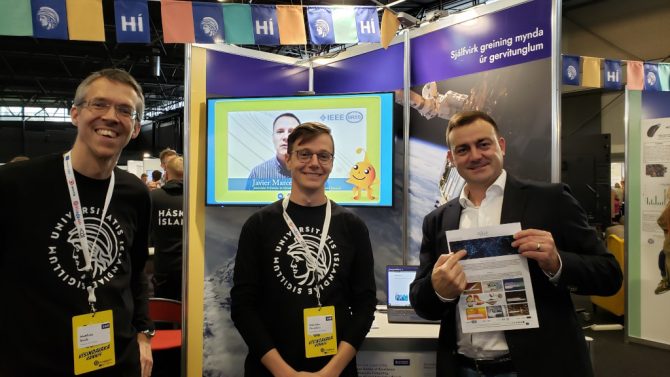
While the following video does not cover any of our exhibits, it gives an idea of the whole event (and each year, there is a price for best science communication, and this year, University of Iceland's children's university got awarded):
